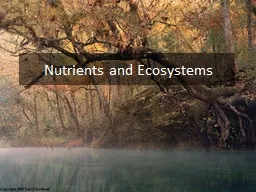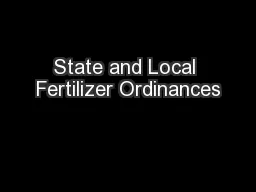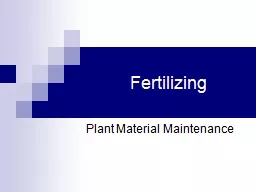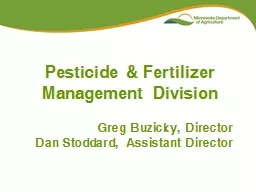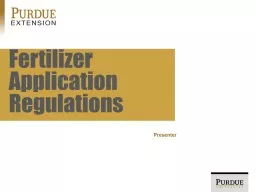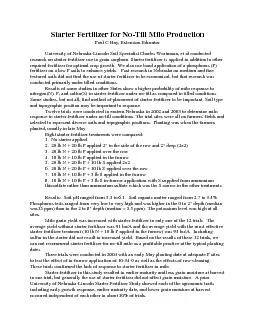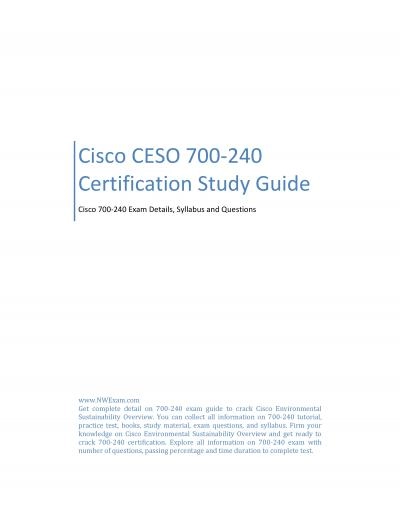PPT-Nutrients and Ecosystems Fertilizer Application Rates Lawns: 80-240 kg N/ha/
Author : alida-meadow | Published Date : 2019-11-01
Nutrients and Ecosystems Fertilizer Application Rates Lawns 80240 kg Nha yr Athletic Fields 200280 kg Nha yr Pastures Dairy 240360 kg Nha yr Vegetables 180200 kg
Presentation Embed Code
Download Presentation
Download Presentation The PPT/PDF document "Nutrients and Ecosystems Fertilizer Appl..." is the property of its rightful owner. Permission is granted to download and print the materials on this website for personal, non-commercial use only, and to display it on your personal computer provided you do not modify the materials and that you retain all copyright notices contained in the materials. By downloading content from our website, you accept the terms of this agreement.
Nutrients and Ecosystems Fertilizer Application Rates Lawns: 80-240 kg N/ha/: Transcript
Download Rules Of Document
"Nutrients and Ecosystems Fertilizer Application Rates Lawns: 80-240 kg N/ha/"The content belongs to its owner. You may download and print it for personal use, without modification, and keep all copyright notices. By downloading, you agree to these terms.
Related Documents

